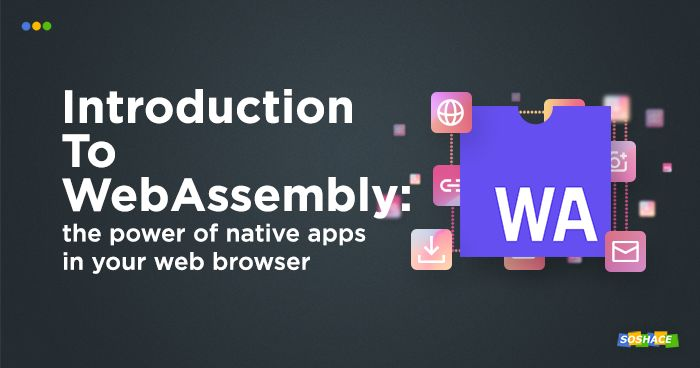- Published on
WebAssembly Running Native Code in the Browser
- Authors

- Name
- Adil ABBADI
Introduction
The web has come a long way since its inception, and web browsers have evolved to support an increasingly wide range of applications. However, one limitation has remained: the inability to run native code directly in the browser. This limitation has hindered the performance and capabilities of web applications, forcing developers to rely on JavaScript and other interpreted languages.

Enter WebAssembly (WASM), a revolutionary technology that enables running native code in the browser. In this blog post, we'll delve into the world of WebAssembly, exploring its benefits, use cases, and current state.
- What is WebAssembly?
- How Does WebAssembly Work?
- Benefits of WebAssembly
- Use Cases for WebAssembly
- Current State of WebAssembly
- Getting Started with WebAssembly
- Conclusion
- Ready to Dive Deeper into WebAssembly?
What is WebAssembly?
WebAssembly is a binary instruction format that allows developers to compile code written in languages like C, C++, Rust, and others into a platform-agnostic, executable format. This format can be executed in web browsers, Node.js, and other environments that support WASM. The primary goal of WebAssembly is to provide a way to run high-performance, native code in the browser, complementing JavaScript and other web technologies.
How Does WebAssembly Work?
The WebAssembly compilation process involves several steps:
- Compilation: Developers write code in a language like C or Rust, which is then compiled into WebAssembly bytecode using tools like the LLVM compiler infrastructure or the Rust compiler.
- Loading: The generated WebAssembly module is loaded into the browser or Node.js environment.
- Instantiation: The WebAssembly module is instantiated, allocating memory and setting up the execution environment.
- Execution: The WebAssembly code is executed by the browser or Node.js, leveraging the Just-In-Time (JIT) compiler and other performance optimizations.
Benefits of WebAssembly
Running native code in the browser offers several benefits:
- Performance: WebAssembly code can execute at near-native speeds, making it suitable for performance-critical applications like games, simulations, and video editing.
- Portability: WebAssembly code can be compiled from various languages and run on multiple platforms, including web browsers, Node.js, and standalone environments.
- Security: WebAssembly provides a sandboxed execution environment, which helps prevent malicious code from accessing sensitive data or system resources.
Use Cases for WebAssembly
WebAssembly has numerous use cases, including:
- Gaming: Run high-performance, native games in the browser, leveraging WASM's performance capabilities.
- Scientific Simulations: Execute complex, computationally intensive simulations, such as weather modeling or molecular dynamics, directly in the browser.
- Video Editing: Develop high-performance video editing applications that run smoothly in the browser.
- Machine Learning: Utilize WebAssembly to run machine learning models and perform inference directly in the browser.
Current State of WebAssembly
WebAssembly is still an emerging technology, but it has made significant progress in recent years. All major web browsers, including Chrome, Firefox, Edge, and Safari, support WebAssembly to varying degrees. Additionally, Node.js and other environments have implemented WASM support.
Getting Started with WebAssembly
If you're interested in exploring WebAssembly, here are some resources to get you started:
- WebAssembly.org: The official WebAssembly website, featuring documentation, tutorials, and resources.
- Rust and WebAssembly: A comprehensive guide to building WebAssembly applications using Rust.
- WebAssembly Playground: An online playground for experimenting with WebAssembly code.
Conclusion
WebAssembly has the potential to revolutionize the way we develop web applications, enabling the execution of native code in the browser. With its benefits, use cases, and current state, WebAssembly is an exciting technology worth exploring. As the ecosystem continues to evolve, we can expect to see more innovative applications and use cases emerge.
Ready to Dive Deeper into WebAssembly?
Start exploring the world of WebAssembly today and discover the possibilities of running native code in the browser.
